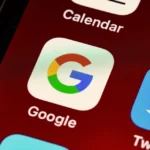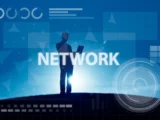
What Is a Data Visualization Developer and How to Become One
October 5, 2022A data visualization developer is a person who helps create and design visual representations of data. Data visualization is an important part of modern data analysis, and there is a growing demand for people who can create effective visual representations of data.
To become a data visualization developer, you will need to have a strong understanding of data analytics and visual design. You will also need to have experience working with software such as Adobe Photoshop and Illustrator. There is no single path to becoming a data visualization developer, but there are many online resources and training programs available. If you are interested in becoming a data visualization developer, start by exploring the available resources and educating yourself about the field.
Data visualization is hard.
It can be really hard to get the data you need to visualize in the right format, or to figure out how to put the data on the graphics effectively. And sometimes the data visualization can be really confusing or difficult to understand.
But don’t worry – with a little bit of practice, you’ll be able to get great data visualizations that are both informative and easy to understand.
Do you need Python to create data visualizations?
Python is often used in data science and machine learning, but is it necessary for data visualization?
There are several reasons why you might want to use Python for data visualization. For example, Python is popular for scientific computing and has a wide variety of libraries for data analysis and visualization. Additionally, the Python language is easy to read and understand, which can make data exploration and visualization more user-friendly.
On the other hand, some data visualization libraries are available in other languages, such as R and Matlab. So if you don’t need Python’s specific features or libraries, it might not be necessary for your project. Ultimately, it depends on the specific needs of your data visualization project.
If you’re still considering whether or not to use Python for your project, it’s worth checking out some of the libraries and tools available. For example, the NumPy library is essential for data analysis and visualization and has a Python interface. Additionally, the panda’s library provides a flexible data analysis framework that’s well-suited for data visualization. So if you’re looking for a versatile and reliable tool for data visualization, Python might be a good choice.
What Is a Data Visualization Developer?
Data visualization developers are in charge of creating beautiful and compelling visualizations that help make data more accessible and easy to understand. They are experts in creating interactive graphs, bar charts, and maps that can help people understand complex data sets in a more intuitive way.
Their work is essential in helping people understand the complex relationships between different pieces of data and plotting them in a way that is both visually appealing and informative. Because data visualization is an ever-growing field, data visualization developers are always in demand and can find themselves working on a variety of different projects.
Some of the most common projects that data visualization developers work on include creating charts and graphs to show trends in data, creating representations of data sets that are more user-friendly, and creating visualizations to help people understand complex data sets.
Data visualization developers are typically required to have a degree in computer science or a related field and are typically skilled in a variety of programming languages. They are also typically very good at working with graphics and design software, which is why many job postings require candidates to have experience with Photoshop, Illustrator, or another graphics-based program.
If you are interested in becoming a data visualization developer, there are a variety of resources available online that can help you learn more about the field. Additionally, many data visualization developers hold workshops and conference sessions that are open to the public, which can be a great way to learn more about the techniques and tools that they use in their work.
Becoming a Data Visualization Developer
As a business, you need to find ways to make your data more accessible and useful. One way to do this is through data visualization. As a data visualization developer, you can help businesses make their data more accessible and useful by creating visual representations of that data.
Why is data visualization important?
Data visualization is important because it allows us to see patterns in our data that we may not be able to see with just plain old looking at the data. For example, if we were to look at the data from a survey that was conducted in a classroom, we might not be able to see the patterns in the data that show which students are more likely to cheat on the quiz. By using data visualization, we can see which students are more likely to cheat, and we can also see which students are more likely to get good grades.
Another example of data visualization is weather forecasting. By using data visualization, meteorologists can see patterns in the data that show which areas are going to be hit by a storm, and they can also see which areas are going to be spared from the storm.
Data visualization is important because it can help us to make better decisions. For example, if we were to use data visualization to look at the data from a survey that was conducted in a classroom, we might be able to see which students are more likely to cheat on the quiz. This information would then help us to decide which students to quiz, and it would also help us to decide which students to teach in a particular classroom.
How can a data visualization developer become a skilled practitioner?
As the world becomes more and more data-driven, the field of data visualization is growing quickly. But to be a successful data visualization developer, you don’t just need technical chops-you to need to be able to conceptualize and design complex visualizations.
To become a skilled practitioner, you need to have a deep understanding of data structures and how they can be used to display data in a way that is both informative and engaging. You also need to be proficient in programming languages like R and Python, and have a good understanding of data visualization techniques like bar charts and scatter plots.
If you have the skills and knowledge necessary to become a data visualization developer, there’s no limit to what you can achieve. With the right tools and techniques, you can create complex visualizations that help people understand complex data in a way that is both easy to understand and visually appealing. So if you’re interested in becoming a data visualization expert, start learning today!
1O places to learn Data Visualization Developer
If you’re looking to jump into the world of data visualization, there are plenty of places to explore. In this post, we’ll highlight 10 of the best resources to learn data visualization development.
1. Datacamp: Datacamp is a great resource for learning data visualization development. It offers courses on a variety of topics, including data preparation, data analysis, visualization, and storytelling.
2. Khan Academy: Khan Academy is a great resource for learning data visualization development. It offers courses on a variety of topics, including data preparation, data analysis, visualization, and storytelling.
3. Interactive Data: Interactive Data is a great resource for learning data visualization development. It offers courses on a variety of topics, including data preparation, data analysis, visualization, and storytelling.
4. DataCamp: DataCamp is a great resource for learning data visualization development. It offers courses on a variety of topics, including data preparation, data analysis, visualization, and storytelling.
5. Udacity: Udacity offers courses on a variety of topics, including data preparation, data analysis, visualization, and storytelling.
6. Data.gov: Data.gov offers courses on a variety of topics, including data preparation, data analysis, visualization, and storytelling.
7. Pluralsight: Pluralsight offers courses on a variety of topics, including data preparation, data analysis, visualization, and storytelling.
8. TED: TED is a great resource for learning data visualization development. It offers courses on a variety of topics, including data preparation, data analysis, visualization, and storytelling.
9. DataCamp Tutorials: DataCamp offers tutorials on a variety of topics, including data preparation, data analysis, visualization, and storytelling.
10. Data.gov Tutorials: Data.gov offers tutorials on a variety of topics, including data preparation, data analysis, visualization, and storytelling.
Is Powerpoint a data visualization tool?
Presentation software such as PowerPoint can be used as a data visualization tool in order to create presentations that are informative and engaging. Powerpoint is a versatile tool that can be used for a variety of purposes, such as presenting data, creating charts and graphs, and displaying photos.
One of the main benefits of using PowerPoint as a data visualization tool is that it is easy to create charts and graphs. You can insert images, charts, and graphs into your presentation either stand-alone or as part of a slide show. Additionally, you can use PowerPoint to create presentations that are formatted to look good on a wide variety of devices, including laptops, tablets, and smartphones.
Overall, PowerPoint is a versatile presentation tool that can be used to create informative and engaging presentations.
What are the disadvantages of data visualization?
Looking at data can be a great way to understand a system, find trends, and make informed decisions. But when data is displayed in charts and graphs, there can be some disadvantages to consider.
Data visualization can be a great way to understand a system, find trends, and make informed decisions.
But when data is displayed in charts and graphs, there can be some disadvantages to consider.
First, data visualization can be difficult to understand. It can be hard to see the overall picture if the data is spread out across many different charts or graphs.
Second, data visualization can be misleading. If the data is not properly analyzed, it can be easy to mistake trends for actual facts.
Third, data visualization can be distracting. When the focus is on the data instead of the information it is trying to convey, it can be difficult to focus on the task at hand.
Fourth, data visualization can be overwhelming. When there are many different charts and graphs, it can be hard to determine which information is important.
data visualization can be time-consuming. Trying to make sense of a large data set using charts and graphs can take a lot of time.
All of these disadvantages can be a challenge to overcome, but they can be important factors to consider when using data visualization in business.
As a data visualization developer, you will need to have strong programming skills and an understanding of data structures and algorithms. You will also need to have experience working with graphics tools, such as Illustrator or Photoshop, and be able to create effective visual representations of data. There are many ways to become a data visualization developer, and the best way to find out is to explore different career paths and find the path that best suits your skills and interests.









